 Your new post is loading...
 Your new post is loading...
Changing The Learning Process
Until now, this level of personalization has been limited to small classrooms, though AI makes every classroom feel like a small one. AI systems analyze students' progress on a scale that teachers alone cannot, effectively minimizing the student-teacher ratio problem. AI systems also erase distance. Learning happens anywhere at any time.
Another benefit of AI-augmented education is that it isn't judgemental. Constructive criticism from an AI tutor can feel less intimidating than a fellow human. Students, especially the underserved, who may not be accustomed to such feedback, are likely to respond more positively to this feedback and are thus more likely to seek it out in the future. Feedback from AI systems is instantaneous and thereby extremely effective and can be acted on immediately. Learn more / En savoir plus / Mehr erfahren: https://www.scoop.it/t/21st-century-learning-and-teaching/?&tag=AI https://www.scoop.it/t/21st-century-innovative-technologies-and-developments/?&tag=AI
Via Gust MEES
If you have just started embarking your journey through the Design Thinking process, things might seem a little overwhelming. This is why we have prepared a useful overview of the Design Thinking process, as well as some of the popular Design Thinking frameworks commonly used by global design firms and national design agencies.
To begin, let’s have a quick overview of the fundamental principles behind Design Thinking:
Design Thinking starts with empathy, a deep human focus, in order to gain insights which may reveal new and unexplored ways of seeing, and courses of action to follow in bringing about preferred situations for business and society.
It involves reframing the perceived problem or challenge at hand, and gaining perspectives, which allow a more holistic look at the path towards these preferred situations.
It encourages collaborative, multi-disciplinary teamwork to leverage the skills, personalities and thinking styles of many in order to solve multifaceted problems.
It initially employs divergent styles of thinking to explore as many possibilities, deferring judgment and creating an open ideations space to allow for the maximum number of ideas and points of view to surface.
It later employs convergent styles of thinking to isolate potential solution streams, combining and refining insights and more mature ideas, which pave a path forward.
It engages in early exploration of selected ideas, rapidly modelling potential solutions to encourage learning while doing, and allow for gaining additional insight into the viability of solutions before too much time or money has been spent
Tests the prototypes which survive the processes further to remove any potential issues.
Iterates through the various stages, revisiting empathetic frames of mind and then redefining the challenge as new knowledge and insight is gained along the way.
It starts off chaotic and cloudy steamrolling towards points of clarity until a desirable, feasible and viable solution emerges.
As we have seen from the definitions and descriptions, Design Thinking means many things to many people, and this theme persists into the practical implementation as well. There are a wide variety of process breakdowns and visualisations ranging typically between 3 and 7 steps. Each process step or phase embodies one or more of the core ingredients of design thinking that being, reframing, empathy, ideation, prototyping and testing. These different implementation frameworks or models might have different names and number of stages, but they embody the same principles laid out in the bullet points above.
Learn more / En savoir plus / Mehr erfahren: https://www.scoop.it/t/21st-century-learning-and-teaching/?&tag=Design-Thinking https://gustmees.wordpress.com/2014/10/03/design-the-learning-of-your-learners-students-ideas/
Via Gust MEES
Michael Young was working one-on-one with a student when he heard a voice: "Maybe pause a little bit longer and wait for the student to respond."
It wasn't his internal monologue reminding him of something he learned in training. The voice belonged to an instructional coach 50 miles away, who was watching what Young was doing in the classroom through a livestream and communicating via an earpiece.
"It was really nice to feel supported and get direct feedback in the moment, because as much as you can do that through somebody being there and watching you, they always do it afterwards or by interrupting [the lesson]," said Young, who teaches special education at Elk Ridge Elementary School in Buckley, Wash. "It was helpful information that changed the way I taught."
The practice is called bug-in-ear coaching, and it has been around for decades in different sectors in some capacity. But in recent years, more and more educators are beginning to try it out. Learn more / En savoir plus / Mehr erfahren: https://www.scoop.it/topic/21st-century-learning-and-teaching/?&tag=Training https://www.scoop.it/topic/21st-century-learning-and-teaching/?&tag=Coaching
Via Gust MEES
Flipping the curriculum could help us meet the demands of the artificial-intelligence era
Technologies such as artificial intelligence, robotics, and biotech are redefining what it means to be human—and employable.
Jobs are disappearing as automation replaces the need for people. New occupations are emerging that demand competencies that can transfer across the multiple assignments workers will experience in their lives. The disappearance of global boundaries presents opportunities—and risks—for all workers.
These changes demand a significant, ambitious evolution in how we prepare students for their future in a world that's increasingly volatile, uncertain, complex, and ambiguous. We need a relevant and modernized education. Learn more / En savoir plus / Mehr erfahren: https://www.scoop.it/t/21st-century-learning-and-teaching/?&tag=modern-education
Via Gust MEES
“The future of education is digital. We live in an increasingly digital world, where technology is a part of our lives in so many ways. Now more than ever, it is crucial that we incorporate digital technology into education. To prepare students for higher education and future jobs, we must ensure that they are familiar with technology. Administrators who want to prepare their K-12 school for the future of education should look at the ways they use technology in the classroom. Schools that are future-ready are those that blend technology with learning seamlessly and include technology in nearly every lesson.”
I just shared my thoughts on the future of education, but what do my peers think? To find out, we decided to produce an expert roundup on the topic of the future of education. We asked 106 education experts to answer one question: “What are your thoughts on the future of education?” In part 1 of this series, we will focus on the future of K-12. Learn more / En savoir plus / Mehr erfahren: https://www.scoop.it/t/21st-century-learning-and-teaching/?&tag=modern-education
Via Gust MEES
A group of middle school students in full beekeeping gear examines one of the hives their school keeps in the woods nearby. “Ooh, there’s honey!” says one excitedly. “I see nectar!” says another.
These eager fifth and sixth graders from Birmingham Covington, a public magnet school in suburban Michigan focused on science and technology, are empowered to become self-directed learners through hands-on experiences in and outside their classroom.
Birmingham Covington’s student-centered philosophy is embedded throughout the curriculum, from third- and fourth-grade classes focused on teaching individual resourcefulness to an almost wholly independent capstone class in seventh and eighth grade called Thinkering Studio. Teachers at the school often say they’re “teaching kids to teach themselves” and rarely answer questions directly; instead they ask students to consider other sources of information first. Even the classrooms, with their spacious communal tables and movable walls, emphasize fluid group and peer-to-peer dynamics over teacher-led instruction. Learn more / En savoir plus / Mehr erfahren: http://www.scoop.it/t/21st-century-learning-and-teaching/?&tag=Self-Directed+Learning
Via Gust MEES
New ways of learning, owing much to digital technology and scientific research, are empowering students and business trainees. The challenge we face is that learning is often not built to fit the learners,” says Dr Itiel Dror, a cognitive neuroscientist from University College London. “There is a mismatch between the learning and the learners. Learning must be ‘brain friendly’, so it’s engaging, motivating and effective. The sector is being forced to step up its game. Since education operates in a world where millennials now check their phones more than 100 times a day, e-learning solutions must compete aggressively with the likes of Facebook, Twitter, Snapchat and Candy Crush, which are just a distracting tap away. “The use of technology, by itself, does not enhance learning, it depends on how it’s utilised. That is a great challenge and we are far from using technology to its full potential,” says Dr Dror, a world expert on learning. The problem lies with most educational systems, globally. Since Victorian times, they’ve been creating mostly dependent learners. Beyond the classroom, students are like fish out of water, gasping for air. They’re reliant on the oxygen of teachers, discipline and schooling to acquire new skills. This isn’t necessarily creating self-starters thirsty for knowledge and masters of their own learning. Self-directed strategies are increasingly needed because a dependent-learner strategy cannot keep pace with the latest business developments, says Vincent Belliveau, executive vice president of Cornerstone OnDemand. The true democratisation of education is now in full swing. “If we want to reach a level of greater learning empowerment, we must provide learners with the authority to be able to curate their own content and the resources to facilitate this. It’s only then that we will truly find learning empowerment,” Mr Belliveau concludes. The tools are all in place. It’s only a matter of time. Learn more/ En savoir plus / Mehr erfahren: https://gustmees.wordpress.com/2014/03/29/practice-learning-to-learn/ https://gustmees.wordpress.com/2015/07/19/learning-path-for-professional-21st-century-learning-by-ict-practice/ https://gustmees.wordpress.com/2014/10/03/design-the-learning-of-your-learners-students-ideas/
Via Stephania Savva, Ph.D, Gust MEES
|
Why do we need STEAM?
STEAM incorporates the benefits of STEM in and through the arts to give a more complete, well-rounded education. Although some feel this distinction is unnecessary because regular STEM incorporates creativity, leaders of the STEAM movement feel that the arts provides a critical missing piece to STEM education that then prepares students to not only understand science, technology, engineering, and math but know how to apply principles from each of these disciplines to creatively solve problems. Here's how educationalist Sir Ken Robinson discusses STEAM in his TedTalk.
While the STEAM movement is still relatively new, it's gaining "steam." In fact, the revered children's education program Sesame Street has added STEAM to its program. Problem-solvers in the future will have to look beyond what first feels like a limitation and approach challenges with inquiry, wonder, and innovation. These are skills that the arts exercise.
In order to create a successful STEAM program, it is essential that the arts are included in STEM in an authentic way. It’s not about adding creativity to STEM, but rather to apply art in real-world situations. For example, if students had an assignment to create a product as a STEM project, incorporating arts in an authentic way would be to improve the appearance or design of the product using principles of industrial design. Learn more / En savoir plus / Mehr erfahren: https://www.scoop.it/topic/21st-century-learning-and-teaching/?&tag=STEAM
Via Gust MEES
In Carol Dweck’s famous study on growth mindset, Dweck taught high school students about brain plasticity and about how the characteristics of intelligence are not fixed. The idea was to convince students that they had control over improving their academic ability. Years later, these students scored higher on standardized tests.
It’s tempting to think of the Dweck study as a near instant fix. You teach students, or yourself, the details of growth mindset. This takes about an hour. And then afterward your performance magically improves.
Although Dweck’s study has been supported by future studies, for example this one, I suspect there is a crucial missing element to the story. What behaviors did the students change after the lesson? Knowing this is the key to understanding how you can improve your own life.
Learn more / En savoir plus / Mehr erfahren: http://www.scoop.it/t/21st-century-learning-and-teaching/?&tag=carol+dweck http://www.scoop.it/t/21st-century-learning-and-teaching/?&tag=Growth+Mindset
Via Gust MEES
As the world fills with more sophisticated AI and ubiquitous technology, human skills--compassion, empathy, etc.--will define the competitive edge of workers and entire organizations. So those interested in thriving in a high-tech world must put renewed prioritization on emotional intelligence and soft skills.
Soft skills represent the top three missing skills of job applicants according to the Society of Human Resource Management's (SHRM) 2019 State of the Workplace.
Top 6 Missing Skills in Job Applicants
Problem-solving, critical thinking, innovation, and creativity (37 percent)
Ability to deal with complexity and ambiguity (32 percent)
Communication (31 percent)
Trade skills (carpentry, plumbing, welding, machining, etc.) (31 percent)
Data analysis / Data science (20 percent)
Science / Engineering / Medical (18 percent)
The significance of developing and applying social and emotional skills is growing. Soft skills are twice as predictive of a student's academic achievement as home environment and demographics and 30-40 percent of jobs in growth industries require soft skills. Additionally, 57 percent of leaders say soft skills are more important than hard skills.
Learn more / En savoir plus / Mehr erfahren: http://www.scoop.it/t/21st-century-learning-and-teaching/?&tag=Empathy https://www.scoop.it/topic/21st-century-learning-and-teaching/?&tag=DQ http://www.scoop.it/t/21st-century-learning-and-teaching/?tag=Empathy http://www.scoop.it/t/21st-century-learning-and-teaching/?tag=Soft+Skills
Via Gust MEES
The expectations we place on teachers are high and growing. We expect them to have a deep and broad understanding of what they teach, how their students learn, and of the students themselves. We also expect them to be passionate, compassionate and thoughtful; to make learning central and encourage students’ engagement and responsibility; to respond effectively to the needs of students from different backgrounds and languages; to promote tolerance and social cohesion; to provide continual feedback and assessments of students; and to ensure that students feel valued and included in collaborative learning. We expect teachers to collaborate with each other, and to work with other schools and parents to set common goals and monitor their attainment.
These expectations are so high, in part, because teachers make such a difference in students’ lives. People who are successful today typically had a teacher who took a real interest in their life and aspirations; someone who helped them understand who they are, discover their passions and realise how they can build on their strengths; a teacher who taught them how to love to learn and helped them find ways to contribute to social progress.
But our education systems are not keeping up. Most schools look much the same today as they did a generation ago, and teachers often don’t have the opportunities to develop the practices and skills required to meet the diverse needs of today’s learners. To help advance the education agenda, the Finnish Ministry of Education, with support from the OECD and Education International, brought together education ministers, union leaders and other teacher leaders in Helsinki this month for the ninth International Summit on the Teaching Profession. Over the years, the Summit has become a seminal event for education policy discourse, with this year’s edition attracting 21 education ministers and the union leaders from the best performing and most rapidly improving education systems, as measured by PISA. Learn more / En savoir plus / Mehr erfahren: https://www.scoop.it/t/21st-century-learning-and-teaching/?&tag=OECD
Via Gust MEES
If you work in social media, explaining your job can be a frustrating experience - especially to family members who probably assume that you just use Facebook all day.
For Community Managers, in particular, there tends to be a lot of confusion over exactly what the role entails.
To clear things up, I thought I’d delve into the world of community management and find out why it’s becoming increasingly important for brands of all kinds.
Here’s a beginner’s guide.
What does a community manager do?
The role of a community manager is to act as the bridge between a brand and the community it is aiming to create (i.e. a loyal audience or group of core consumers connected by a similar interest).
They should be the brand’s ambassador, engaging with potential customers and building relationships with existing ones. They are also focused on gauging sentiment around the brand, using social listening tools in order to monitor feedback and engagement. Learn more / En savoir plus / Mehr erfahren: http://www.scoop.it/t/21st-century-learning-and-teaching/?&tag=Digital+Skills
Via Gust MEES
Preparing a child for the world that doesn’t yet exist is not an easy task for any teacher. Step back and look at that picture from a broad perspective. What are the critical 21st-century skills every learner needs to survive and succeed in our world? What abilities and traits will serve them in a time that’s changing and developing so rapidly?
They want to be challenged and inspired in their learning. They want to collaborate and work with their peers. They want to incorporate the technology they love into their classroom experiences as much as they can. In short, they have just as high a set of expectations of their educators as their educators have of them.
How Are Educators Responding?
The Australian Curriculum Assessment and Reporting Authority, (ACARA), have identified the following as the General Capabilities they see as essential for learners:
Critical and creative thinking
Personal and social capability
Ethical understanding
Intercultural understanding
Information and communication technology capability
Literacy
Numeracy
Learn more / En savoir plus / Mehr erfahren. http://www.scoop.it/t/21st-century-learning-and-teaching/?&tag=modern-education
Via Gust MEES, NextLearning, Jim Lerman
This online project will start in September 2017 and finish in April 2018. The project is open to high school students and teachers from all over the world who believe in the power of global connections.Your students need to have communicative competence in English as all the assignments and communication will be conducted in English only. Objectives The objective of this project is for high school students and teachers to make international connections with peers and experts from all over the world and to improve their problem solving skills. As we all encounter problems every single day, it is important to know how to solve both easy and complex problems. In this project, we aim to show our students how to define problems, how to generate evaluate, select and implement solutions. We believe that this skill will be one of the most important ones in the future workplaces. Upon completion of this project, students will: • develop an understanding of problem solving • identify the skills to participate in problem solving • better understand the SDG ( Sustainable Development Goals) and the challenges in achieving it • improve their writing, speaking and ICT skills • meet international students and become a part of a global community • participate in thought provoking Skype conversations and self –reflection activities that challenge students to investigate global problems • become competent users of ICT tools in education • gain a factual knowledge on global problems • learn to express themselves online • be challenged to share the information they learn Upon completion of this project, teachers will be able to: connect with educators in other schoolsbuild their knowledge to feel more confident to teach global content in their classroomsdesign a global learning experiencedevelop activities around the SDGsimprove their ICT skills Learn more / En savoir plus / Mehr erfahren: https://gustmees.wordpress.com/2015/07/19/learning-path-for-professional-21st-century-learning-by-ict-practice/
Via Gust MEES
Promote future-ready learning with the ISTE Standards for Students Today’s students must be prepared to thrive in a constantly evolving technological landscape. The ISTE Standards for Students are designed to empower student voice and ensure that learning is a student-driven process. Connect with other educators in the ISTE Standards Community and learn how to use the standards in the classroom with the ISTE Standards for Students ebook. Learn more / En savoir plus / Mehr erfahren: http://www.scoop.it/t/21st-century-learning-and-teaching/?&tag=ISTE
Via Gust MEES
|



 Your new post is loading...
Your new post is loading...

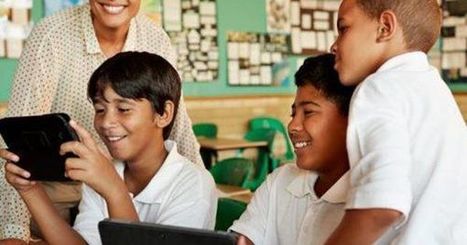

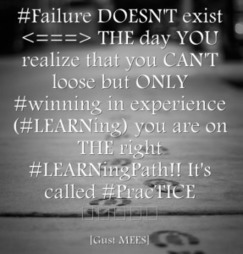

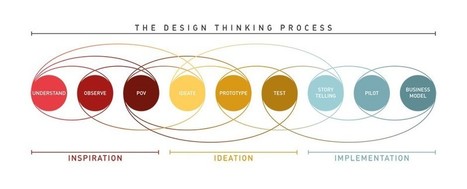

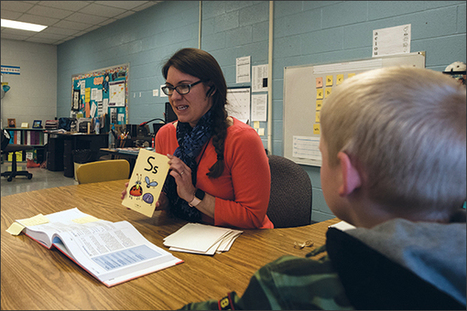
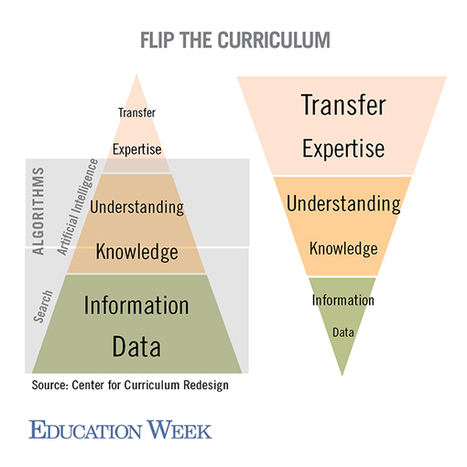

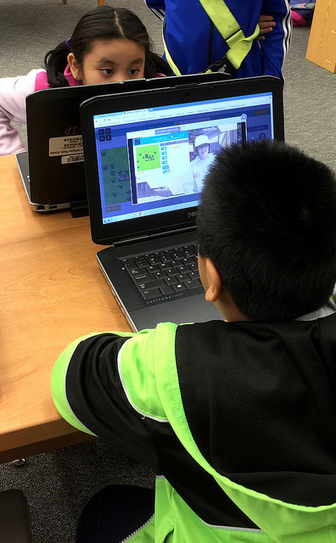
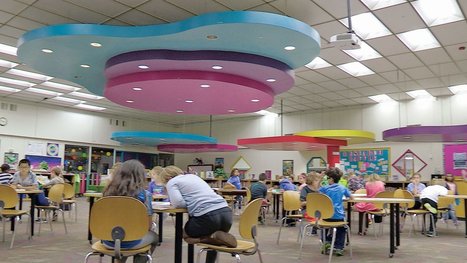






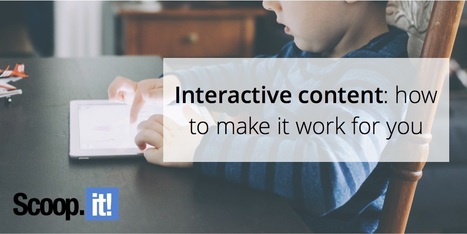
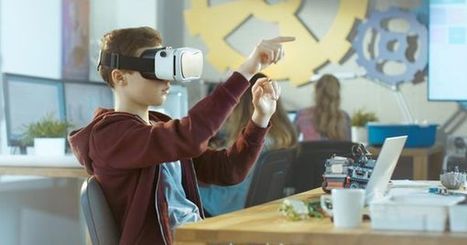



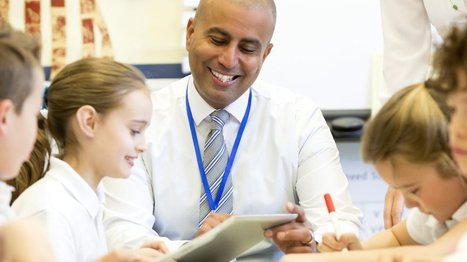
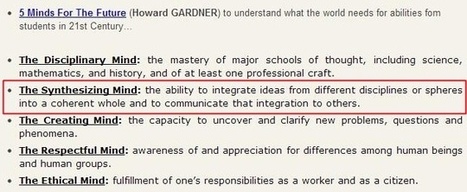
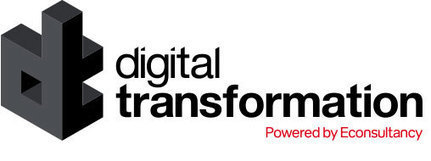
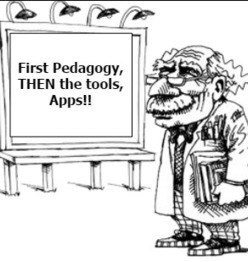
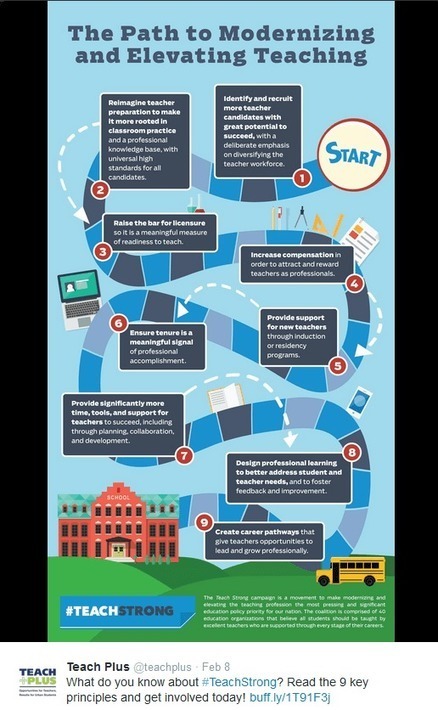


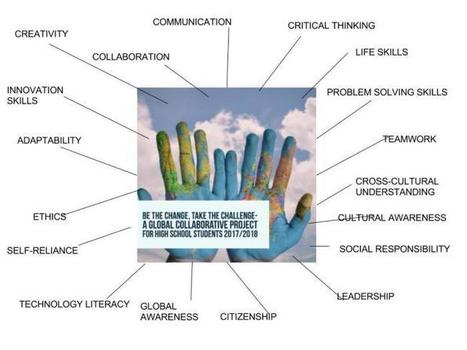







Changing The Learning Process
Until now, this level of personalization has been limited to small classrooms, though AI makes every classroom feel like a small one. AI systems analyze students' progress on a scale that teachers alone cannot, effectively minimizing the student-teacher ratio problem. AI systems also erase distance. Learning happens anywhere at any time.
Another benefit of AI-augmented education is that it isn't judgemental. Constructive criticism from an AI tutor can feel less intimidating than a fellow human. Students, especially the underserved, who may not be accustomed to such feedback, are likely to respond more positively to this feedback and are thus more likely to seek it out in the future. Feedback from AI systems is instantaneous and thereby extremely effective and can be acted on immediately.
Learn more / En savoir plus / Mehr erfahren:
https://www.scoop.it/t/21st-century-learning-and-teaching/?&tag=AI
https://www.scoop.it/t/21st-century-innovative-technologies-and-developments/?&tag=AI